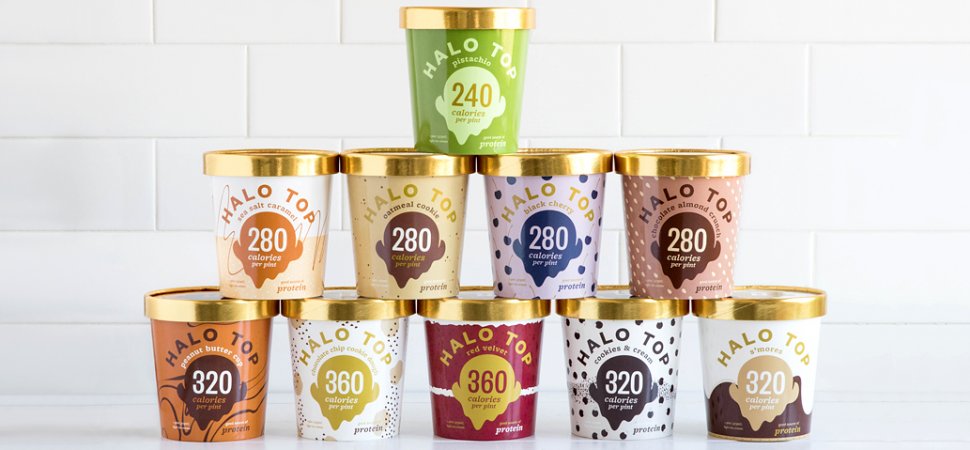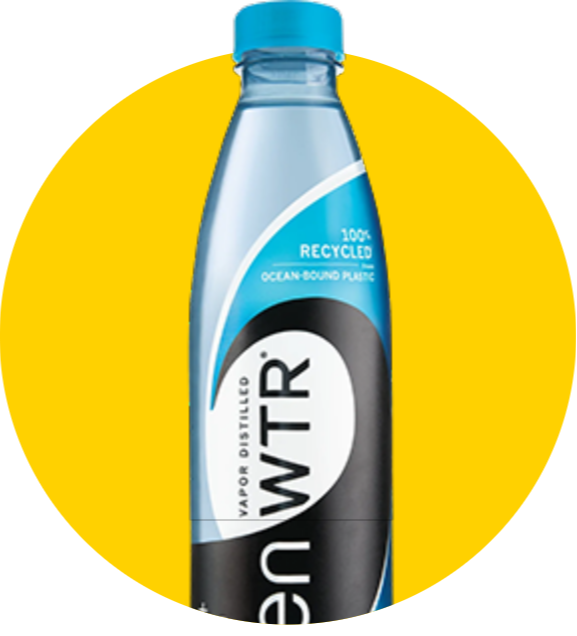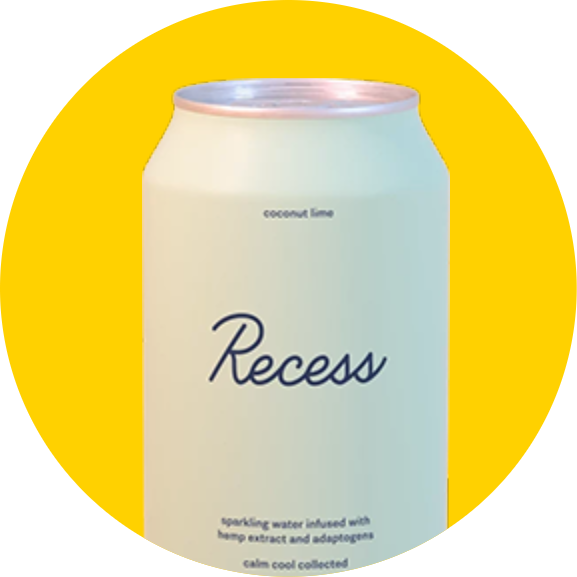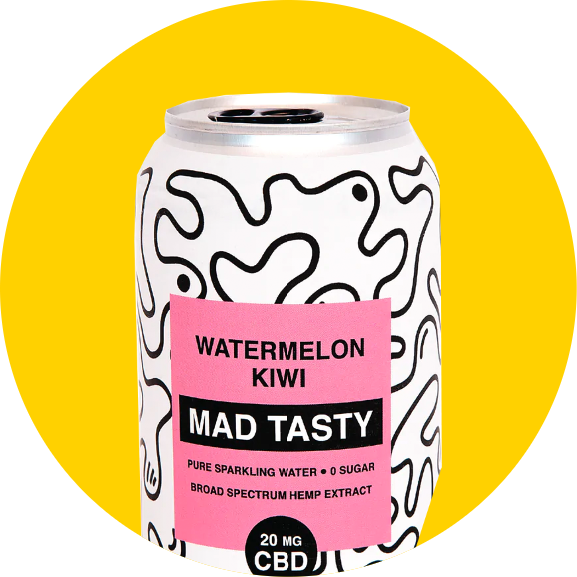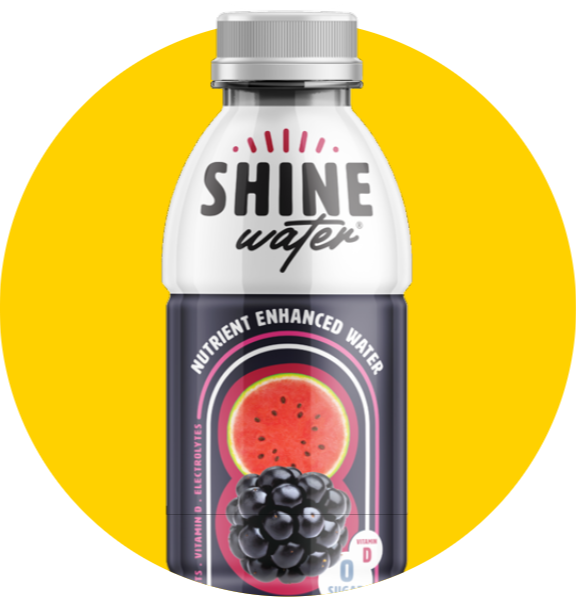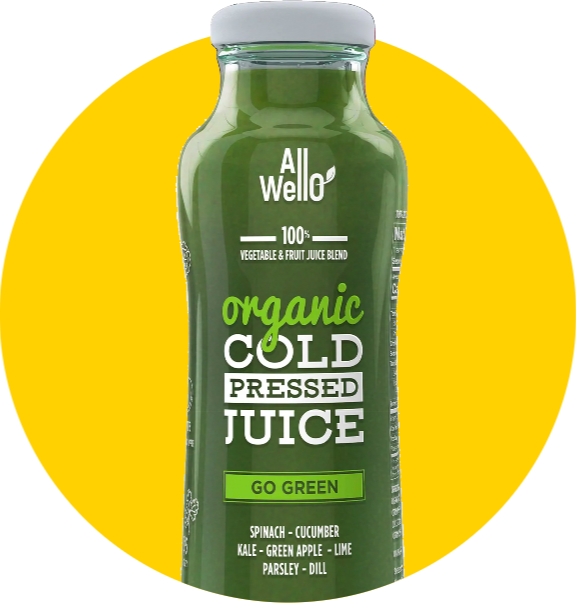Halo Top has emerged as one of the biggest consumer phenomenons in recent years, with a devoted consumer base that snaps up as much of its low-calorie high protein ice cream as stores can stock. Until recently, they did almost no advertising, and the team continues to forgo a traditional office, instead working remotely and out of a shared coworking space. Halo Top’s rapid rise and the rave product reviews led us to name them as one of the most innovative brands in consumer last year.
In August 2017 Halo Top became the top-selling pint of ice cream in the United States, surpassing even longtime industry stalwarts like Häagen-Dazs and Ben & Jerry’s, and in November 2017 Time Magazine named Halo Top as one of its top inventions of 2017. Given the continued growth of Halo Top, I thought now would be an appropriate time to pause and reflect on all the things that Halo Top got right, explore the ways they grew and iterated, and discuss what lessons their success may hold for the broader CPG community. Our mission is to help entrepreneurs to thrive by giving them the capital and resources they need. Part of that includes helping to shed light on what has driven success historically.
Product
We at CircleUp have had the privilege of knowing Halo Top from almost the beginning. The company raised two seed funding rounds on our platform, the first in 2013 and the second in 2015. Both CircleUp and Halo Top were founded in 2012, so in a way, we’re launching and growing our respective companies together.
The first thing that attracted us to Halo Top was the product. It was immediately clear that Halo Top had created something that was incredibly unique. The pitch on our marketplace read: “Halo Top ice cream is not only low-calorie, it is the right kind of low-calorie for today’s shopper: high in protein and low in sugar and fat while maintaining a decadent taste.”
Along with all of these claims being true — the product really was high in protein and surprisingly low in calories — Halo Top also boasted a relatively simple set of ingredients that could appeal to the growing number of consumers who were focused not just on nutritional data but on the actual makeup of food products. From the start, Halo Top was offering something that wasn’t being offered by the established incumbents in the ice cream market. Being unique isn’t enough, you have to be unique in a way that matters to consumers. Halo Top understood this early on and was able to offer a product that appealed to the growing number of consumers who saw icecream as a snack, and wanted an indulgent snack that wasn’t bad for them. Big ice cream players like Nestle or Unilever were releasing a lot of new products at this time in an attempt to capture market share from private label brands, but they were releasing products largely in the form of new flavors or light versions of existing flavors. Halo Top was offering something different. They were giving the consumer permission to eat the entire pint in one sitting – while also delivering an indulgent flavor profile.
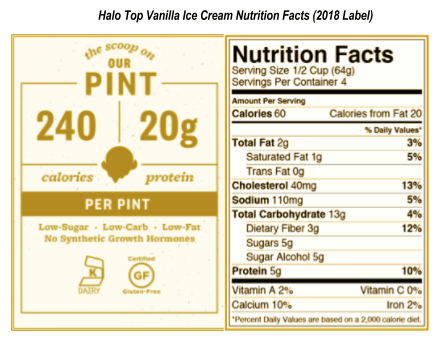
That being said, Halo Top was not without competition in the better for you market. Arctic Zero was founded in 2010, Enlightened Ice Cream was founded in 2013, and low-fat frozen yogurt franchises such as Pinkberry and Red Mango had already hit big strides in the food service space.
Halo Top’s taste and nutritional profile helped it differentiate itself from the competition. Competitors like Arctic Zero had a similar ingredient count to Halo Top but were water based instead of milk based so they didn’t actually taste like ice cream. Meanwhile, the light versions of traditional ice creams still contained sugar and corn syrup so consumers didn’t think these products were that much better for them. Halo Top was able to expand the market by offering a product that other players didn’t. Halo Top had the right product from the beginning, but a few other things would have to fall in place before that product truly took off.
Brand
In 2013, Halo Top’s brand was the area that clearly had the most room for improvement. There were some promising signs- the name “Halo Top” was catchy, and the product’s surprising nutritional information was featured prominently on the packaging.
But the overall impression was a bit muddy. Halo Top’s early logo was much more elaborate in style than the snappy and simple logo it has today, and its packaging threatened to overwhelm consumers with an abundance of too much information. The below graphic showcases Halo Top’s early packaging attempts.
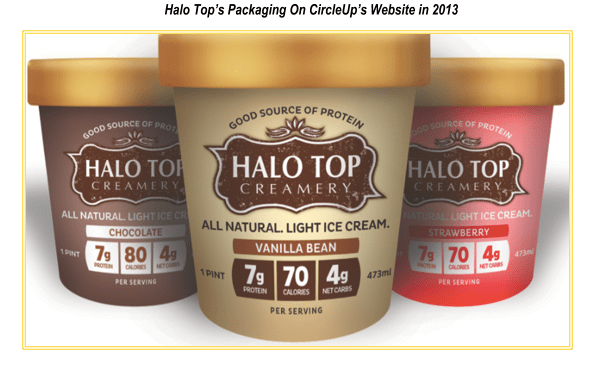
Look at the package for as long as you would look at ice cream on the shelf (<2 seconds). Now turn away and try to recall what was unique about the brand. It’s difficult because there are so many attributes they are trying to highlight- all Natural, Light, (Flavor), Protein, Calories, Net Carbs, “Good source of protein”. Halo Top had a strong value proposition, but its attempts to communicate that value proposition were muddled. If a CPG company’s packaging doesn’t clearly communicate the unique value propositions that matter to the consumer, then the consumer isn’t clear why they should buy the product.
Team
When Halo Top debuted on our marketplace, the founding team looked solid, but it did not necessarily follow a typical template for consumer product success. Halo Top’s founder and CEO Justin Woolverton had attended prestigious universities (UCLA and Columbia) as had its president and COO Doug Bouton (Georgetown and the University of Virginia), but both had previously been in a different career field altogether-law. They were relatively young, both in their mid-to-late 20s, and neither had an entrepreneurial background or experience in consumer products.
All of this would typically add up to a mixed review from the perspective of many traditional consumer product investors. But looking back now, it’s evident that the team was an important factor in the brand’s success. The diverse background of Halo Top’s team underscores an important point: in consumer, there’s no longer is an “ideal background.” Great ideas can come from anywhere. More and more we’re seeing founders who don’t have a lifetime working in consumer bringing really fresh and innovative ideas to the table.
Growth
One important example of the team’s ability to adapt and iterate came in mid-2015 when they began to take a hard look at their ice cream’s packaging. They realized that although there was nothing blatantly wrong with the labeling, it was not effectively communicating their product’s value proposition in a concise way that would quickly catch the eye of a customer browsing the aisle. Having a product unique in a way that matters for the consumer is necessary but not sufficient for success; the brand also needs to effectively communicate the value proposition. The team decided to redesign the label. They opted for simple and clean and made sure that the calorie count of the ice cream was displayed front and center below the ice cream’s name. The lesson: Focus on what matters.
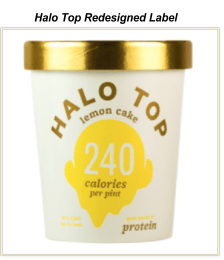
With the new design, the brand was poised for success but still needed to increase awareness in order to increase sales. That awareness came from an unexpected corner when in January 2016 a GQ writer ate nothing but Halo Top for 10 days straight and published an article on his experience that went viral: What It’s Like to Eat Nothing but This Magical, Healthy Ice Cream for 10 Days. Following the article, public awareness grew rapidly.
To demonstrate this growth, we analyzed Halo Top on the Consumer Reach Index. The CRI, a feature within our machine learning platform Helio, measures how likely a consumer is to encounter a particular brand or product across a variety of different channels. It measures things like the presence and growth of a brand online (e.g. social media) and offline (e.g. grocery stores) and it provides a top down time-series view of consumer reach. The CRI indexes values in a similar way to Google Trends. A value of 1 is the peak point of reach in a brand’s history or the peak point of all measured values if more than one brand is included on the index.
As can be seen below, Halo Top started in mid 2015 with a much lower consumer reach than Arctic Zero- a competitor at the time. The package rebrand and great publicity from the GQ article allowed Halo Top to garner more attention. The timely release of new flavors also helped, and by the end of 2016, the brand’s consumer reach had caught up to Arctic Zero. Halo Top has been on a tear since then and in July 2017 it became the best selling pint of ice cream in the country.
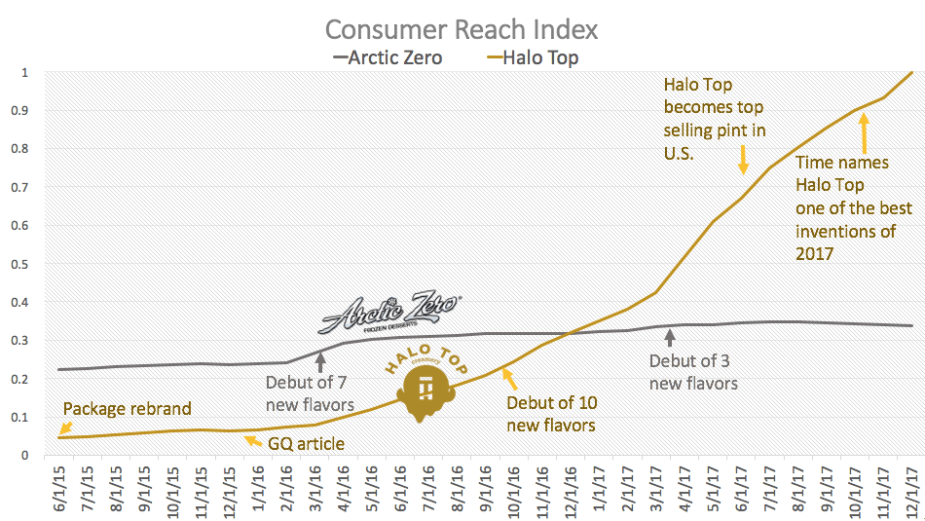
The consumer reach of Halo Top is growing at an increasingly rapid pace, and I’m excited to see where they will be in a year from now.
Lessons for the Industry
Product differentiation, in a way that truly matters to the consumer, is necessary but not sufficient for success. Halo Top always had the ingredient deck, but when they focused in on the value proposition to the consumer- the brand took off.
One of the huge factors in Halo Top’s runaway success was the brand’s ability to effectively read the market and offer a product that other ice cream makers didn’t. The founders developed an innovative product, but they didn’t stop there. They truly tuned in to the way that consumers reacted to Halo Top, and continuously iterated on their product offering and brand until they created something that people loved — and then they kept on delivering, with new flavors and pitch-perfect marketing. It takes founders with intelligence, savvy, and persistence to steer a brand from zero to market dominance within five years.
The biggest lesson here for other consumer companies is that it’s not enough to simply release a great product. You have to understand why your product is unique in a way that matters for the rest of the world. That vision leads to a clearer brand strategy – which attracts consumers and retail partners that resonate with your vision, creating beautiful network effects for the company. The good news? It typically doesn’t require a lot of funding to hone in on that- just a lot of long hours and honest reflection by the founders.
A version of this article initially appeared in Inc.
Zen Water
A water brand with an estimated revenue of $10-$20M (a +407% YoY increase)
Recess
A carbonated drink brand with an estimated revenue of $10-$20M (a +104% YoY increase)
Mad Tasty
A water brand with an estimated revenue of $1-$5M
Shine Water
A water brand that is in 3,000 retail doors (a +329% YoY increase)
All Wello
A juice brand with an estimated revenue of $1-$5M (a +89% YoY increase)
By understanding how these trends will impact the CPG landscape, you can position your business for success.
To learn more about Helio or get in touch, visit heliodata.com.

